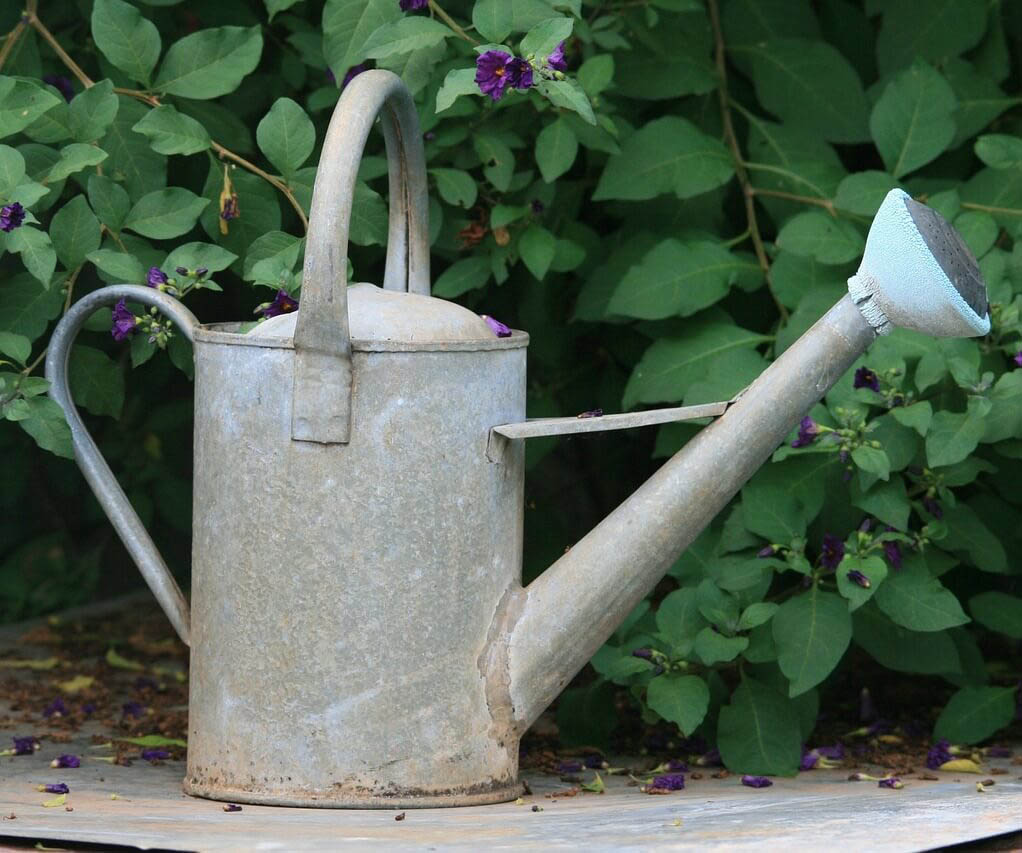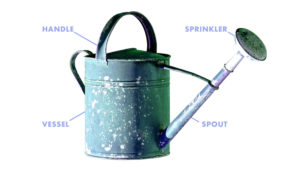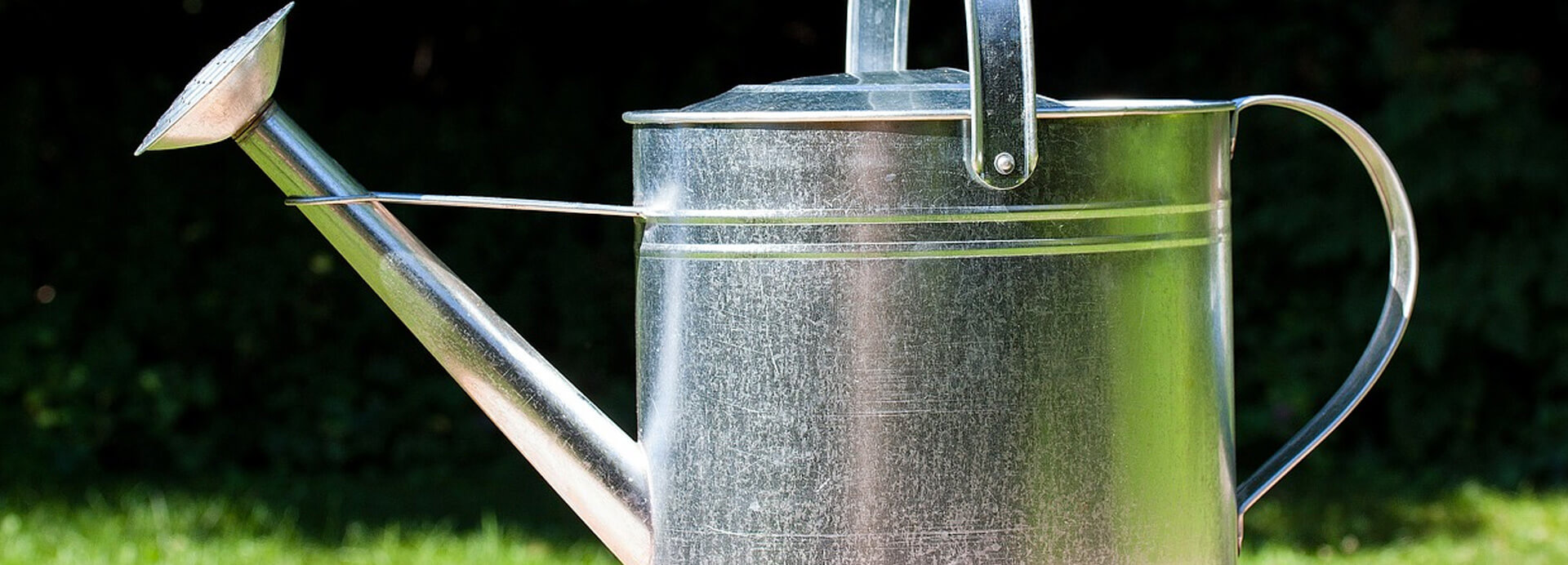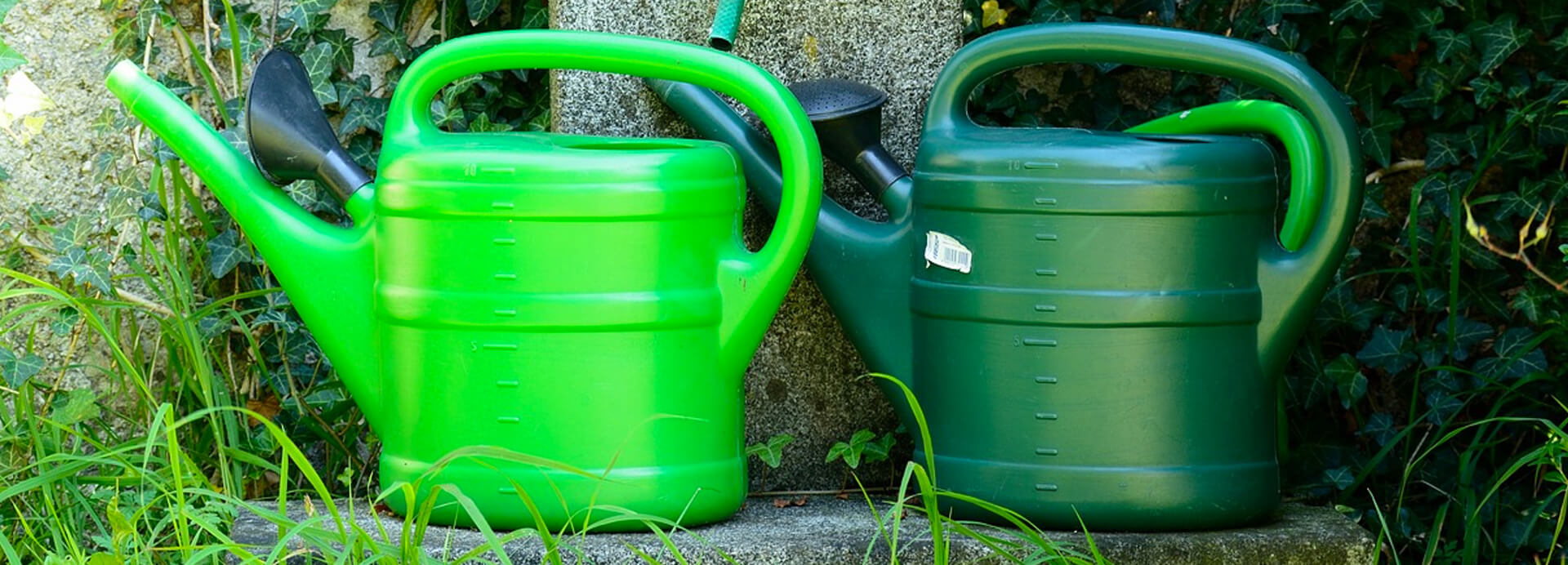
29 Jul Watering Cans – The underrated garden heros
A watering can consist of a vessel, a handle, a spout and a shower/sprinkler. It is usually made of plastic, metal, ceramic, glass, copper or zinc.
The common watering cans are made of plastic, ceramic, copper or zinc. The watering cans are used functionally for watering, but now also as a decorative object or flower pot.
 The only main differences between watering cans are their size and the material from which they are made. Outdoor cans, i.e. gardens and flower beds, have a capacity of up to 15 liters, whereas indoor watering cans can usually only be filled with one to two liters of water. Normally they are quite cheap, but you can also spend a fortune* on them.
The only main differences between watering cans are their size and the material from which they are made. Outdoor cans, i.e. gardens and flower beds, have a capacity of up to 15 liters, whereas indoor watering cans can usually only be filled with one to two liters of water. Normally they are quite cheap, but you can also spend a fortune* on them.
However, size and filling volume is not only associated with the intended use, but also with the appearance. The jugs used in the garden are usually only about functionality, whereas for the interior many different colorful and shapely specimens are available.
A further distinguishing feature is the quality of the grommet. It can either be a simple spout or be equipped with a shower. Many watering cans are also sold with the shower nozzle as a separate accessory.
This variant offers you more flexibility. So you can use the jug for watering potted plants and filling flower vases on the one hand and for sprinkling larger areas such as your herb bed on the other hand.
Watering can capacity
Watering cans are available in almost any size. From very small cans with a capacity of less than one liter to the usual watering cans with a capacity of 3 to 5 liters, up to much larger models with a capacity of 10 liters and more.
Some models become so heavy that they can only be carried with both hands. Depending on what you want to water, you should consider buying watering cans of different sizes depending on the application. Smaller watering cans are best for balcony plants and larger ones for garden and pot plants.
Material
Everything in the garden must be uniform, is the motto of many gardeners. Therefore, the watering can match the garden furniture and style.
You can choose from the following materials:
- metal
- plastic
- zinc
- stainless steel
There are also watering cans made of copper and ceramic. These are usually not used by the owners for irrigation, but simply as decoration for windowsills or gardens – sometimes also as flower pots.

Metal watering can
Besides the plastic can, metal watering can is one of the two most common and popular cans. Various types of sheet metal are used, such as aluminum, tin, zinc or copper. The cans are usually painted in order to protect the metal better from environmental influences.
Some models are also made of steel, stainless steel or cast iron, which promises a certain longevity, but can also have a detrimental effect on the weight. These basic materials can also be galvanized, copper-plated and painted for better protection.
Sheet metal pouring cans are available in all standard sizes. They are mainly used for kitchen and ornamental gardens, as they can also be stored outdoors without any problems. Such models are usually quite uniform in shape and color, as they are only intended to serve the purpose of artificial irrigation.
Smaller indoor or balcony jugs can also be used as decorative objects or as an alternative to a flower pot. You can therefore choose from a wide range of colors and designs to match your house or apartment.
Advantages
- Durable and resilient
- Usually weather-resistant processing
Disadvantages
- May have high dead weight depending on metal type
- May be susceptible to rusting

Plastic Cans
Similar to the metal cans, the plastic watering cans are also made of different plastics. These include hard plastic polypropylene (PP), slightly softer polyethylene (PE) and PVC. Silicone watering cans are also available, but unlike the other plastics, they are usually only available in a smaller version for the living area.
The same applies to plastic cans as to metal cans: The larger the capacity, the more functional the shape. The large garden watering cans are usually simply designed, whereas the smaller room watering cans have many different and partly extravagant designs.
Advantages
- Low dead weight
- Better wearing comfort
- Weather-resistant
Disadvantages
- Can become brittle over time depending on the type of plastic used
Where can I buy a random watering can?
A watering can can be purchased in every department of large DIY stores. They are also available in supermarkets, especially during the summer months.
Where can I buy a big watering can?
The biggest watering can I found, is the one below. Its a classic design, made out of plastic and can be filled with 14 litres.
This is already a lot of weight, which is why it does not make sense to produce even bigger watering cans.
Get one for £9.95 on amazon*.


Pingback:Advantages of a water hose for garden - Water Gadgets
Posted at 09:58h, 10 September[…] garden hose saves you having to carry heavy watering cans from your water connection to your beds. With a garden hose you water your lawn and beds. You also […]